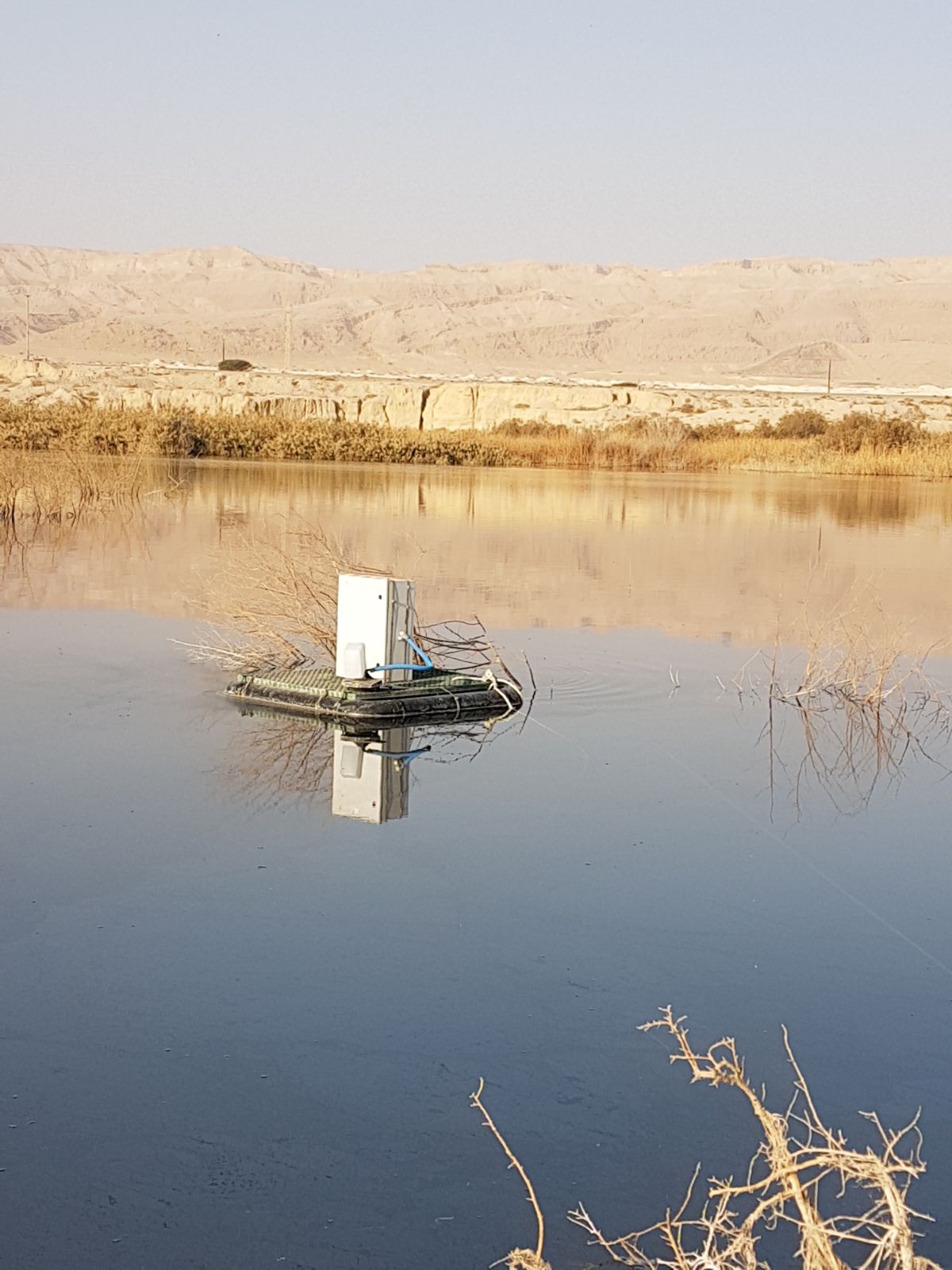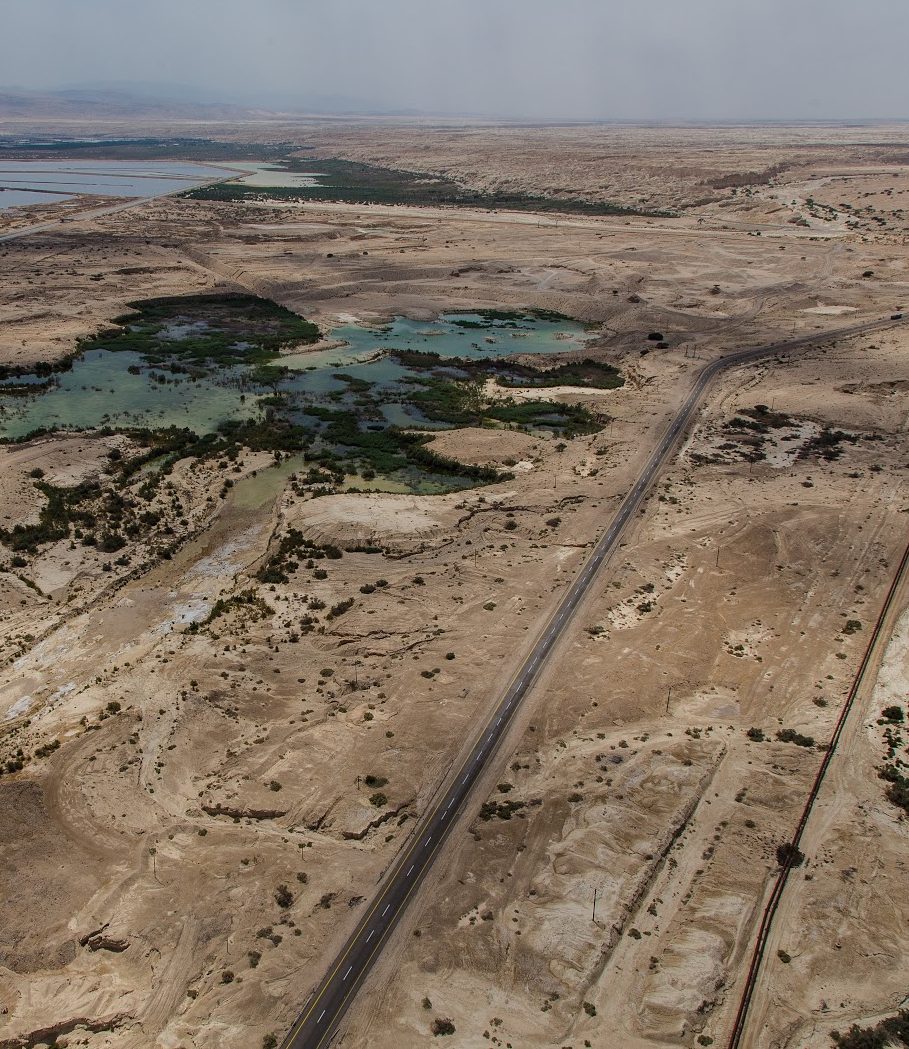Salt Wetland “Swan Lake”
The Ashalim reservoir, located south of our Dead Sea Works facility, is a wet habitat with an abundance of rich biological diversity. It is situated within a typical arid habitat. ICL Dead Sea Works (DSW), whose excavations in the region created the wet habitat, takes extra measures to preserve it. ICL DS’s actions are an example of our proactive commitment to environmental responsibility, combining our operational needs with efforts to preserve a rich and unique ecological system. \
ICL DS, whose excavations in the region created the lake, maintains the site and acknowledges the importance of the lake, even taking extra measures to preserve and continue to operate the site. During the flow of acidic phosphogypsum liquid from the Rotem Plant to the Ashalim creek (July 2017), the liquid overflowed, filling the northern holes of the Ashalim Reservoir (the northern section of the reservoir) and seeping into the Swan Lake. ICL DS took quick action and channeled 130,000 cubic meters of fresh water into the lake, to improve the water quality. Continuous monitoring sensors were placed in the lake, by ICL DS, to record water quality.

Preservation of the Biological Diversity at the Ashalim Reservoir (knows as "Swan Lake")
N. Maoz, Ecology and Environment.

A variety of abiotic conditions exist along the western coast of the Dead Sea, enabling the development of ecological systems and unique habitats. Alongside typical desert systems of arid habitats, one can find wet habitats with an abundance of rich biological diversity, in accordance with local conditions of water quality, soil types, the abundance of water and its flow in the system. One of the interesting phenomena is the development of wet ecological systems in locations where wadi soil is being excavated. These systems are created in the areas of high groundwater and where flood water is accumulated. Their existence over time is a challenge in light of their proximity to operational areas of ICL DS and the other projects in the region. The Ashalim reservoir, located south of the ICL Dead Sea site, is a good example of such a system, and the manner in which operational needs can be combined with environmental responsibility to preserve a rich and unique ecological system.
The reservoir was created in the 1990s in ICL DS’s excavation areas, east of Route 90 (Picture 1), on an area of 400 dunams. The southern part of the reservoir (known as “Swan Lake”) is permanently flooded, feeding from ground and flood water, with a water quality rate ranging between 3000 and 4000 milligrams of chloride per liter.
Due to the year-long permanent presence of water, a complex and multi-layered ecological system has developed at the site, including salt flat flora, water vegetation, invertebrates and vertebrate fauna. The flora is typical of a dense belt of phragmites australis Trin and tamarix sp. that grow on the banks of bodies of water. The second belt includes flat salt flora, such as Suaeda monoica, Suaeda fruticose, Seidlitzia rosmarinus and unique plants, such as Salvadora persica.
The site attracts water birds and birds of prey, some nesting and some migratory. The variety includes more than 100 birds species, including some at risk, such as the ferruginous duck, little ringed plover, western yellow wagtail and western marsh harrier. In addition, there are many types of mammals in the area, some at risk, including the striped hyena and microbats. Within the water, there are many taxons of invertebrates that are used as food for the water birds and a large population of Arabian toothcarp, which is endemic to the Dead Sea area. The unique features of the place and the ability to observe a wide variety of birds has transformed it into a tourist attraction and site of interest, attracting birdwatchers from the area and around the world. In environmental and ecological terms, the Swan Lake is of utmost importance in preserving nature and serving as a unique bird “Hot Spot”. As such, much must be done to preserve and nurture the site, both for the existing organisms and for visitors and hikers in the area.
ICL DS, whose excavations in the region created the lake, maintains the site and acknowledges the importance of the lake, even taking extra measures to preserve and continue to operate the site.
- As the lake’s water originates from the same groundwater source from where ICL DS drills for water, withdrawing from it is the last resort, and only when water is not available from other sources. Water leaking from the lake enters the ICL DS’s feeding channel and negatively affects the production process. Even so, it was decided not to take preventative measure that might harm the body of water.
- During the flow of acidic phosphogypsum liquid from the Rotem Plant to the Ashalim creek (July 2017), the liquid overflowed, filling the northern holes of the Ashalim Reservoir (the northern section of the reservoir) and seeping into the Swan Lake. ICL DS took quick action and channeled 130,000 cubic meters of fresh water into the lake, to improve the water quality. Continuous monitoring sensors were placed in the lake, by ICL DS, to record water quality.
- Operational activities near the lake, such as digging and filling, are performed while examining their effect on the lake and to prevent physical damage and hydraulic changes.
- A program, operating in cooperation with the Israel Nature and Parks Authority, to improve public accessibility to the site, includes an access path and a bird observation point.
Other than the preservation of Swan Lake, there are plans to consider preserving other wet bodies of water, such as the Hemar Site reservoir, as an ecological compensation for flat salt areas that continue to diminish.

Other than the preservation of Swan Lake, there are plans to consider preserving other wet bodies of water, such as the Hemar Site reservoir, as an ecological compensation for flat salt areas that continue to diminish.



